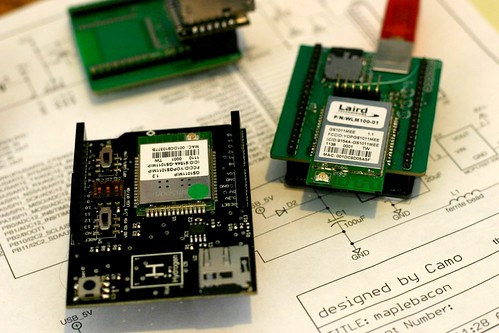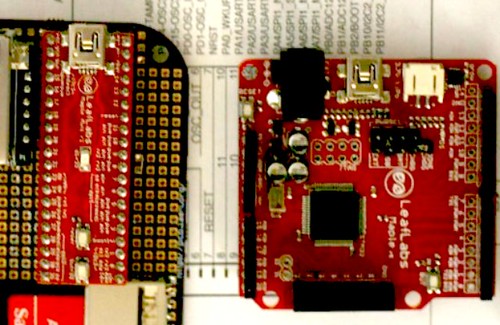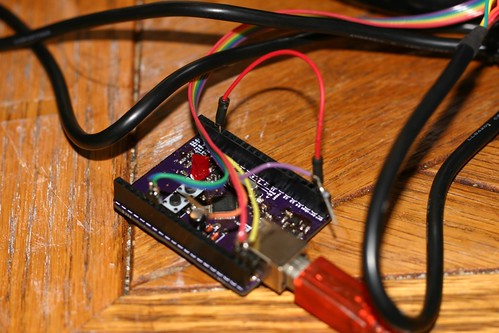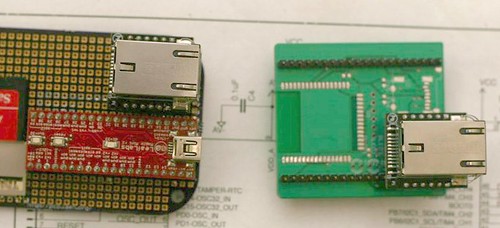
For a while we have been working with a board that Cameron created called the Maple Bacon (http://github.com/soycamo/maplebacon), as well as a logging and wireless shield that we are calling the Baco-matic5000. The maple bacon is a clone of the maple mini (http://leaflabs.com/docs/hardware/maple-mini.html) . The point in recreating it was that LeafLabs did not stock it directly and that the only supplier was a chinese fab. It made more sense to redesign it and run it through the DorkbotPDX group pcb order and if we needed anything faster to go through Sunstone.
The maple platform (http://leaflabs.com/) is a wiring(arduino) port for the STM32 series of ARM microcontrollers.

Maple Mini and Maple RET6
Like the Arduino most of the details needed to get a program running are tucked neatly out of the way.
There are a few things I like about the maple platform on top of having thrice as much memory, 3 serial ports and a usb serial port, a pair of i2c ports and another pair of spi ports in a package that costs less than 80 bucks. One of them is that the documentation for the language and the ide is local. The other part is that the ide is optional.

Maple is a library first and an Arduino clone second. So you can test things in the ide and then when you are ready to create a project you can actually use a real code editor and “make install” it onto your board. And its fast (look ma no java). See: http://leaflabs.com/docs/unix-toolchain.html
Getting our clone board up and running was relatively simple the STM32s have a serial bootloader which you can program with any 3.3v serial adapter and a cross platform python script. Using this you load a usb based bootloader which loads your code. Much easier than having to in circuit program your boot-loader with a platform specific programmer. See: http://leaflabs.com/docs/bootloader.html

Speaking of 3.3v no more converting rom 5 to 3v to talk to your wireless modules or an sd card. In the picture at the top of this post over 2 thirds of the parts on the hydrogen are devoted to converting signals from the arduinos 5v processor to the 3.3v gainspan wifi module and the 3.3v sd card. In the bacomatic these lines are directly connected to the processor. Below is an ethernet solution that is also 3.3v based connected to the Maple Mini and the shield that Cameron designed.

It’s been brought to my attention that while lots of folks in this group are doing arm based processing it still hasn’t been brought down to where it can be used by artists and musicians like the Arduino and Wiring (and even the teensy). So I hope to be presenting more Maple and Libmaple based projects in the near future.